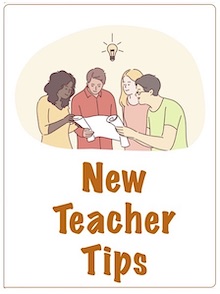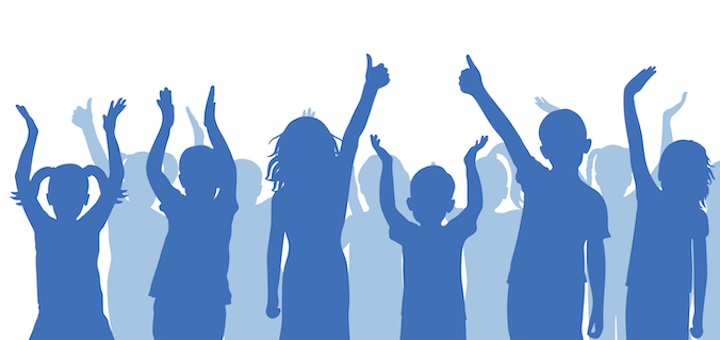Brain Breaks Relieve Stress & Boost Learning
A MiddleWeb Blog

In these moments I’m reminded that all of us benefit from a well-designed brain break. Brain breaks are simple transitional physical and mental exercises designed to prevent learning fatigue, refocus the attention of the class, and help students remain receptive to learning.
Brain breaks to get kids moving
►Queuing up a popular song and having a 1-minute dance party.
►Doing a quick set of jumping jacks to get the blood flowing.
►Having students do simple yoga poses that can be performed at their desks or in a designated area.
►Balancing on one leg for 30 seconds, then switching to the other leg.
►Using GoNoodle to engage students in a quick song/dance.
►Guiding students in some mindful, deep breathing.
►Guided group stretch and/or exercises where the teacher and students get up and do some stretches to get the blood flowing.
►Setting up quick and easy Minute to Win It games for friendly competition.
►Facing off with a classmate in a quick Rock-Paper-Scissors competition.
►Playing a Just Dance video and having students dance along.
►Providing pairs of students with emotion cards. One partner has to act out the emotion with only their body/face, and the other partner has to guess the emotion on the card.
Breaks that build connections
Another use of brain breaks might be to help students connect with and learn more about their classmates. For example….
►Asking students to bring in a photo (or find one on their phone) that has significance to them. In pairs or small groups, students share the stories behind their photos.
►Having students conduct short interviews with different students throughout the week to get to know more about them and to reveal shared experiences.
►Playing Would You Rather. Ask students lighthearted “Would you rather?” questions, and have them find someone in the class who made a similar choice and discuss why they chose that option.
►Forming a Compliment Circle with 3-4 classmates wherein each student gives a genuine compliment to the person on their right.
►Playing Two Truths and a Lie. In pairs, students take turns sharing two true statements and one false statement about themselves. Their partner has to guess which statement is the lie.
►Team-building Challenges. Setting up quick team-building challenges, such as building a tower with limited materials or solving a riddle together.
►Having students share responses to an open-ended, “How much” question with a classmate. Questions could be as simple as… “How much do you like pizza?” or “How much are you looking forward to the end of school?”
Brain Breaks + Academics
While movement and community building breaks such as those above may have benefits, teachers can also provide breaks that don’t interrupt learning. Instead, educators can employ “academic” brain breaks after short bursts of teaching/learning to give students a chance to review and consolidate new information. For example…
►Stand, move, and review where students stand up, move to a new spot, and do a rapid review of concepts covered so far.
►Asking students to use emojis to create an Emoji Summary of what has been learned over the past 10 minutes.
►Timed transitions between activities where students find someone and share something learned in our last activity, and what we were thinking about the next activity.
►Having students play Class-Concept Charades where they act out teacher provided concepts, vocabulary terms or topics from the lesson.
►“Walk and talk,” or asking students to walk slowly with a classmate around the room and talk about something they recently learned and/or something they are confused about.
►Having students work in small groups to play a quick game of Pictionary related to the lesson or topic being studied.
Brain breaks to overcome the overwhelm
When used strategically, brain breaks can be a valuable strategy to address the challenges students face when overwhelmed by academic tasks. Have some breaks prepped in advance for those times when the class energy sags.
Energizing physical exercises and community-building interactions serve to refresh students’ minds, prevent learning fatigue, and create a positive and supportive classroom atmosphere. Other “academic brain” breaks offer an effective means to consolidate learning and reinforce understanding.
By recognizing the significance of both physical and academic breaks, educators can optimize the middle school learning experience and foster a more seamless, holistic approach in their classrooms.




































Dr. Chandler,
This is a great reference for teachers! So many times, teachers forget the importance of brain breaks and the impact they can have on a community. I’ve been known to “plank” with my students :).
Great ideas…thanks for the ideas!